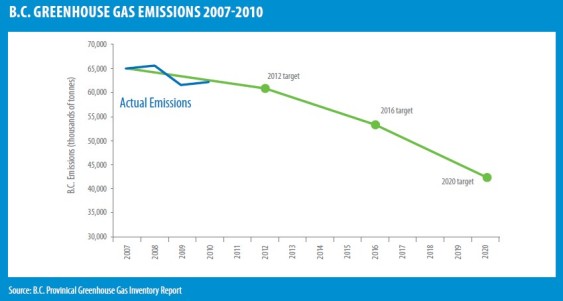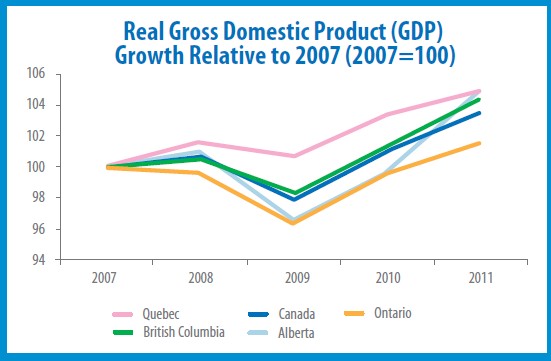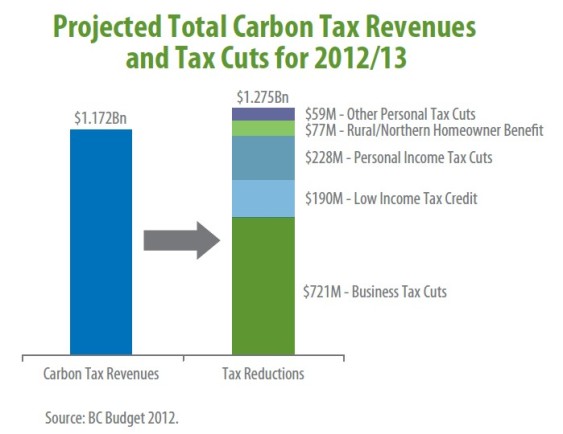If you only want to know three things about British Columbia’s carbon tax, here’s what they should be. First:
BC’s carbon tax, while still young, is helping the province reduce its greenhouse gas emissions consistent with its targets.
Second:
BC’s carbon tax has been correlated with a GDP growth rate higher than Canada’s as a whole. (Compare the green line with the dark blue line.) Combined with the province’s emissions reductions, this is what it looks like to de-carbonize a growing economy.
Third:
BC’s carbon tax is genuinely “revenue neutral,” meaning that for every dollar the government raises by pricing carbon emissions it returns a dollar in the form of tax cuts. It’s a perfect example of shifting taxes from things we want more of—like personal income and business production—to things we want less of—like carbon emissions.
Needless to say, there really is a lot more you should know about how BC’s carbon tax works (and what it can do better). One good place to start is something Sightline wrote recently, “Deciphering the Impacts of BC’s Carbon Tax,” which takes a much closer look at what we know about how the carbon tax has fared since its inception in 2008. The upshot is that things look pretty good.
Here are three other important sources:
- Sightline: Making BC’s Carbon Tax Even Better
- Province of British Columbia: Making Progress on BC’s Climate Action Plan
- Sustainable Prosperity (University of Ottawa): BC’s Carbon Tax Shift: The First Four Years.
All images in this post are taken from the Making Progress on BC’s Climate Action Plan report.




Comments are closed.